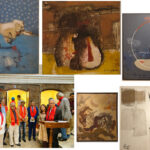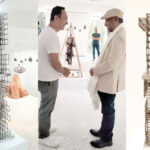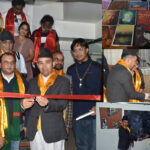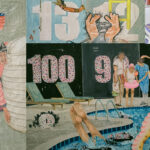On May 16, the Australian government returned a 13th Century Tundaal (temple strut) to Mr. Herambha Raj Rajopadhyay, the head priest of Ratneshwor temple. The handover occurred at a ceremony held on the premises of Patan Museum. The event was attended by Mr. Michael Brand (Director of the Art Gallery of New South Wales), The Hon. Tim Watts, MP (Australia’s Assistant Foreign Minister), Ms. Felicity Volk (Ambassador for Nepal from Australia), Ms. Melanie Eastburn (Senior Art Curator, South Wales), Mr. Suresh Adhikari (Secretary of the Ministry of Culture, Tourism, and Civil Aviation), and Mr. Chiribabu Maharjan (Mayor of Lalitpur Metropolitan City).
During the handover event, Assistant Foreign Minister Watts, who was on an official visit to Nepal from May 16th to 17th, praised AGNSW, stating, “Today, Australians have demonstrated unwavering dedication to upholding the highest ethical standards and international obligations. This exemplifies the expectations of the Australian people and the world’s expectations of Australia.”

During the ceremony, AGNSW Director Michael Brand announced that the temple strut would be temporarily housed at Patan Museum before being returned to its original location at Ratneshwor Temple. He noted that out of the temple’s struts, only two remained, while the others had been lost in the international market. As a result, replicas of the same struts were created during the temple’s restoration in 1992.
Mayor Chiribabu Maharjan of Lalitpur Metropolitan City, speaking about the return of the struts, stated, “During my visit to the Museum of France this year, I encountered three statues that were in the museum and have been actively engaging in discussions for their repatriation. Once those statues are returned to Nepal, we are considering placing them back in their original location with a modern security system to ensure they are protected from theft in the future.”

“Today is a day of celebration as it is evident that the relationship between Australia and Nepal is flourishing, with our people at the core of these connections,” Assistant Minister Watts expressed.
“We are delighted that we have collaborated with Nepal on various fronts such as climate change, disaster preparedness, and good governance. Additionally, we are actively exploring new initiatives, including the potential introduction of direct flights between Australia and Nepal. By bringing our two countries closer and connecting our people, we are fostering stronger ties,” Assistant Minister Watts further stated.
“In 1975, after the collector’s passing, the strut was unlawfully taken and eventually ended up in a museum. Once we became aware of its original state, we ensured its return. Today marks a joyous occasion for everyone involved. Australia upholds ethical practices and humility, as expected from its people. Cultural institutions worldwide should follow this example by returning what is not rightfully theirs. This act strengthens the bond between nations,” Assistant Minister Watts concluded.

During the handover of the Tundaal to the local community, AGNSW Director Dr. Michael Brand expressed the art gallery’s honor in collaborating with the Australian Government to return this significant heritage piece to its rightful place and rightful owners—the people of Nepal.
“As our comprehension of the past deepens, we are fortunate to inhabit a more interconnected world, where collaboration is ingrained in our work and in our relationships with our professional peers and the numerous thriving diaspora communities in Australia. These connections enrich our research and enhance our understanding of the arts for which we have taken on custodial responsibility,” he remarked.

What is Yakshi Tundal and its significance?
This Yakshi Tundal refers to a wooden artifact in the form of sinuous tree diety which is popularly known as Shalabhanjika or Yakshi.







Leave A Comment